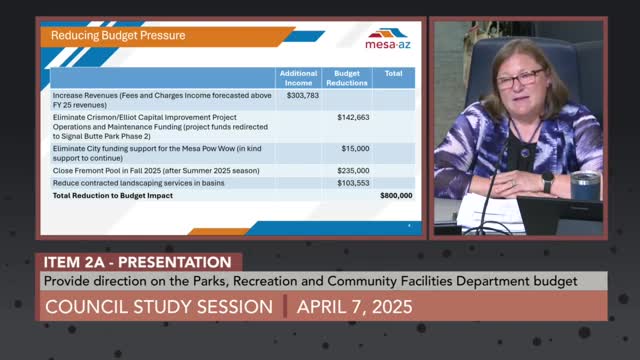Mesa City Council plans new Southeast pool while closing Fremont due to disrepair
April 08, 2025 | Mesa, Maricopa County, Arizona
Thanks to Scribe from Workplace AI , all articles about Arizona are free for you to enjoy throughout 2025!

This article was created by AI using a video recording of the meeting. It summarizes the key points discussed, but for full details and context, please refer to the video of the full meeting. Link to Full Meeting
In a proactive move, the council is also planning to construct a new pool in Southeast Mesa, projected to open in 2030. This facility, along with another pool at the Eastmark high school campus, aims to enhance recreational options for residents in the area. The design phase for both pools is set to begin soon, with the city investing around $34 million in the overall project. The design costs are expected to be about 7-8% of the total budget, which will be funded through bonds approved by voters.
While the closure of the Fremont Pool raises concerns about access to swimming facilities, city officials emphasized that the new pools will serve as regional destinations, shifting from a neighborhood-based model to a more centralized approach. This strategy aims to provide better services to a larger population while managing operational costs.
Additionally, the council discussed necessary budget adjustments to address staffing needs in light of increased demand for city services. A proposed addition of part-time staff aims to maintain current service levels without introducing new programs, reflecting a careful balancing act in the city's financial planning.
As the city moves forward with these initiatives, residents can expect a transition period that may affect access to swimming facilities but ultimately aims to enhance community resources in the long term. The council's decisions underscore a commitment to addressing both immediate budgetary concerns and future recreational needs for Mesa's growing population.
Converted from Council Study Session - 4/7/2025 meeting on April 08, 2025
Link to Full Meeting
Comments
View full meeting
This article is based on a recent meeting—watch the full video and explore the complete transcript for deeper insights into the discussion.
View full meeting